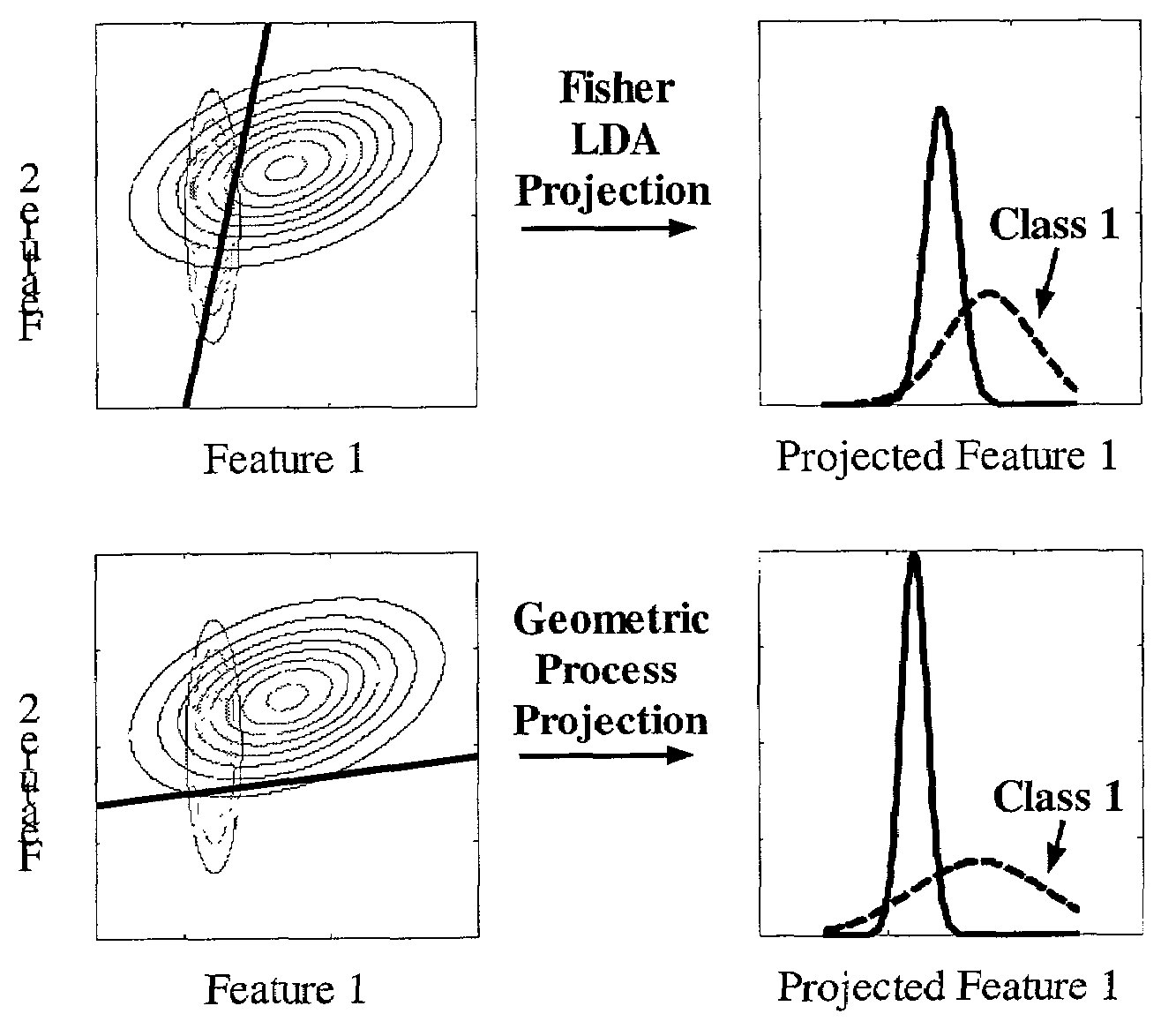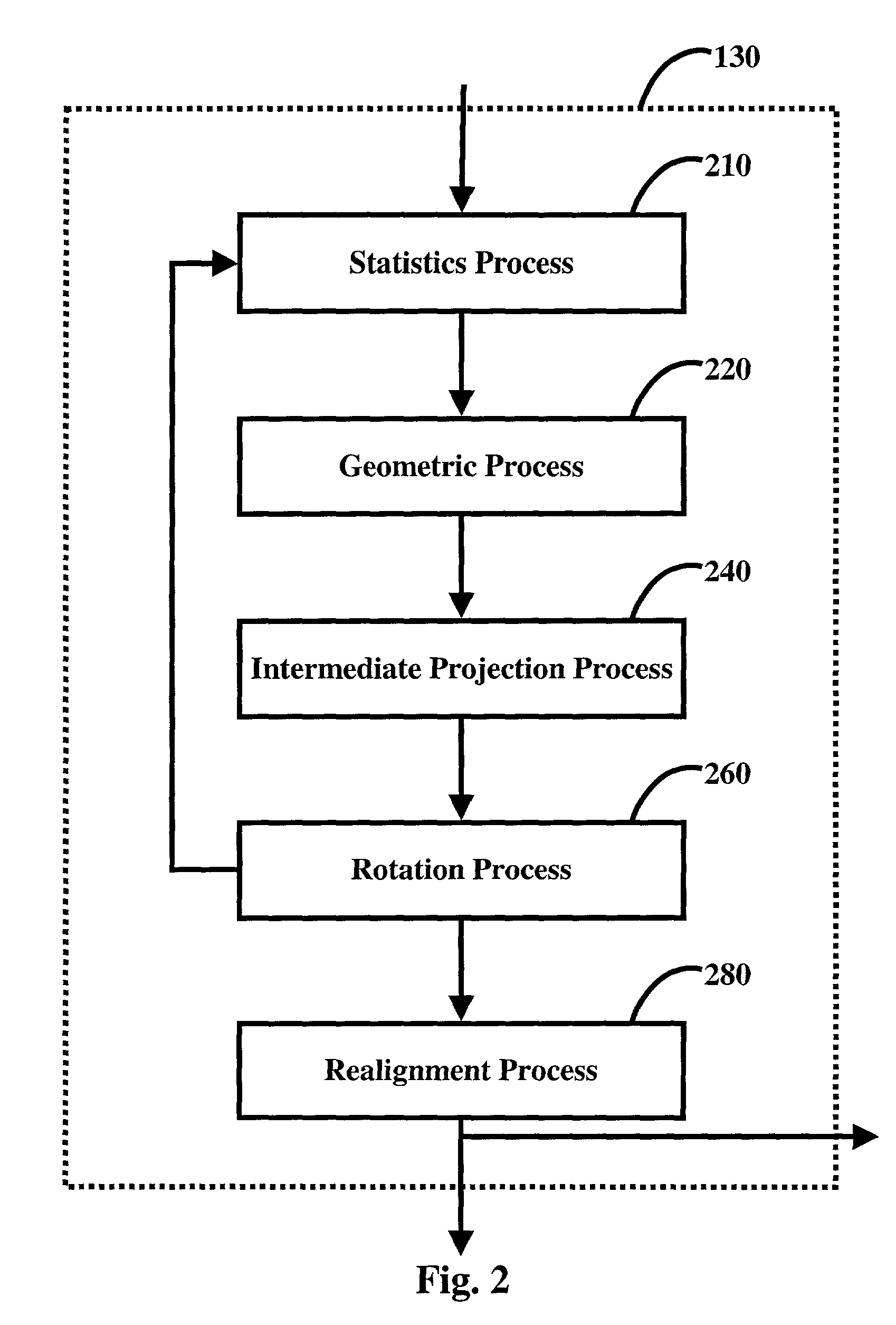Method of geometric linear discriminant analysis pattern recognition
a geometric linear discriminant and pattern recognition technology, applied in the field of pattern recognition, can solve problems such as insufficient discriminative information to separate classes, difficulties in the decision processor and statistical models, and associated pitfalls, so as to improve the accuracy and performance of pattern recognition, reduce the time of a decision processor, and manage the complexity of the decision processor
- Summary
- Abstract
- Description
- Claims
- Application Information
AI Technical Summary
Benefits of technology
Problems solved by technology
Method used
Image
Examples
Embodiment Construction
[0068]In one embodiment of the instant method invention, as shown in FIG. 1, a collection of raw continuous or discrete data is collected for input into the instant method for geometric linear discriminant analysis pattern recognition, step 110. As an exemplar, if the instant method were being used for speech recognition the data collected would be a continuous acoustic waveform of human speech.
[0069]In the next step, 120, the feature extraction process, features that are useful for the pattern recognition system are chosen and extracted from the raw data collected in step 110 and used to generate n feature vectors with d real-valued feature attributes. The feature vector is in dimension d and is paired with a class label. Often this class label will be known a priori based on the classes to be discriminated. In some cases, however, the a priori knowledge of the class to be paired with the feature attribution vector will not be available and the class will be labeled randomly, assig...
PUM
 Login to View More
Login to View More Abstract
Description
Claims
Application Information
 Login to View More
Login to View More - R&D
- Intellectual Property
- Life Sciences
- Materials
- Tech Scout
- Unparalleled Data Quality
- Higher Quality Content
- 60% Fewer Hallucinations
Browse by: Latest US Patents, China's latest patents, Technical Efficacy Thesaurus, Application Domain, Technology Topic, Popular Technical Reports.
© 2025 PatSnap. All rights reserved.Legal|Privacy policy|Modern Slavery Act Transparency Statement|Sitemap|About US| Contact US: help@patsnap.com



